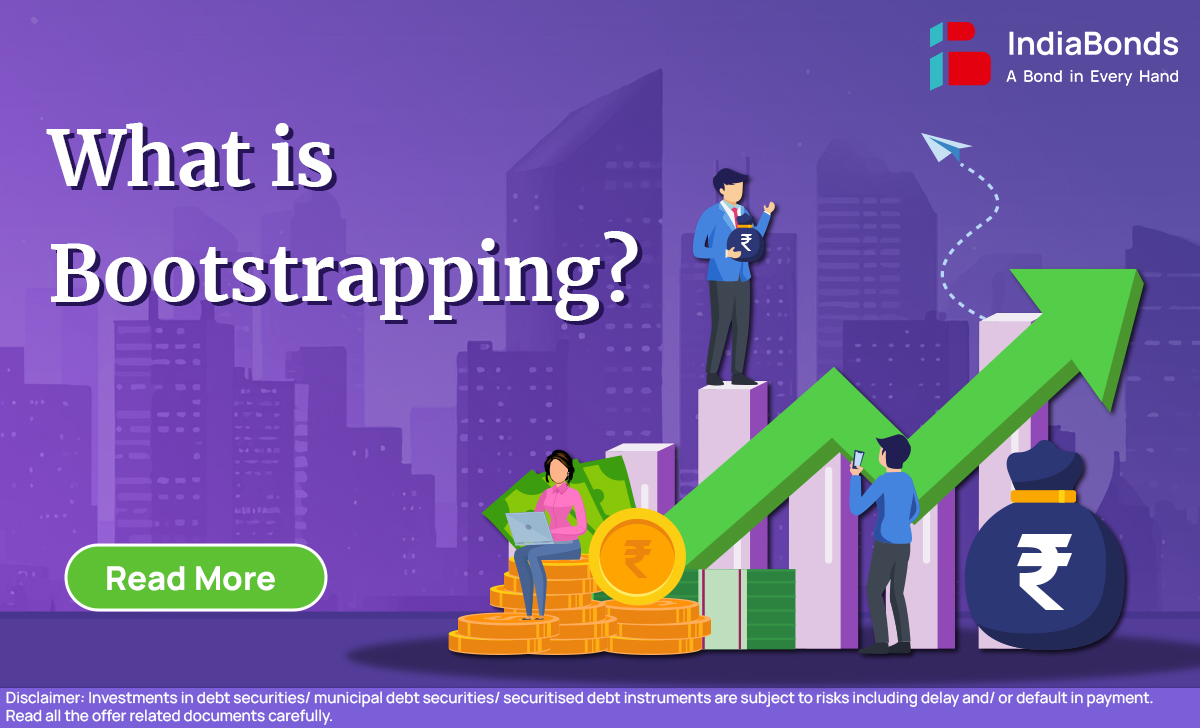What is Bootstrapping? Building Empires Without Handouts

Picture this: You’re baking a cake, but instead of rushing to the store for fancy ingredients, you work with what’s in your pantry. That’s bootstrapping in a nutshell—crafting a business from scratch using grit, creativity, and the resources already at your fingertips. No investor sugar daddies, no loans—just raw hustle. Companies like Zoho and Mailchimp didn’t start with megabucks; they turned constraints into fuel. Let’s unpack how you can do the same.
Stages of Bootstrapping
Bootstrapping isn’t a “strategy”—it’s a mindset. Think of it as business karate: using minimal resources to maximum effect. Here’s how the journey unfolds:
The Garage Phase
Start with a lean idea. Zoho began as a network management tool coded by two brothers in Chennai. No office, no staff—just a problem to solve.
- Your Move: Sketch a one-page business plan. Focus on solving one pain point.
MVP: Keep It Ugly (At First)
GitHub’s first version was a bare-bones code repository. It worked—and that’s all that mattered.
- Your Move: Build a “good enough” product. Use free tools like Canva or WordPress to mock it up.
Cash Is Oxygen
Mailchimp survived the dot-com crash by charging from Day 1. No freebies.
- Your Move: Offer pre-orders or charge upfront for services.
Reinvest or Die
Spanx founder Sara Blakely plowed every dollar from her $8,000 savings into product development. No vacations, no fancy ads.
- Your Move: Automate savings—divert 80% of profits back into growth.
Scale on Your Terms
Patagonia grew slowly, rejecting buyouts to stay true to its eco-mission.
- Your Move: Expand only when your current customers beg for more.




Why do People Chose Bootstrapping?
- Control and Ownership: Bootstrapping allows entrepreneurs to keep full control and decision-making power.
- Lower Financial Risk: By avoiding external debt or equity capital, entrepreneurs minimize financial liabilities.
- Emphasize Efficiency: Constrained resources foster creative problem-solving and efficient operations.
- Shared Vision: With no outside investors, there is no shared vision.
- Flexibility: Entrepreneurs can make adjustments or make decisions without needing to seek approval from stakeholders.
Real-Life Perks
- Ownership: Zoho’s founders still hold 88% equity.
- Creativity: Mailchimp’s quirky branding emerged because they couldn’t afford agencies.
- No Debt Hangovers: No loans = no 3 AM panic about repayments.
For others, bootstrapping is not just a financial strategy; it is a philosophy that promotes self-reliance and self-discipline. It is an opportunity to build a business without sacrificing what it believes in.
Advantages of Bootstrapping
- Full Ownership: Business owners are entirely in control of their business and profits.
- Resourcefulness: Limited funding pushes entrepreneurs to think creatively and optimize resources.
- Reduced Financial Stress: With no investor liabilities or loans, there is less financial stress to generate short-term profits.
- Gradual Growth: Emphasize steady and sustainable development rather than rapid expansion.
- Customer Loyalty: Hands-on practices foster more personal connections with first-time customers.
These advantages of bootstrapping show how it can create long-term and stable businesses.
Disadvantages of Bootstrapping
- Limited Resources: Poor finance can restrict business development and innovation.
- High Personal Risk: Businessmen invest personal money, risking financial instability.
- Slower Scaling: Growth is slower compared to large external investment companies.
- Revenue Dependency: Business operations can be too reliant on consistent revenue.
- Potential for Burnout: With not enough resources to cover all functions of the business, there is a potential for burnout.
Understanding the disadvantages of bootstrapping can help entrepreneurs know what to expect.
How to Bootstrap
Strategic planning and disciplined execution are required for bootstrapping. Here is how you can bootstrap your business:
- Keep it Simple: Begin with a basic business plan to maintain low costs.
- Leverage your own abilities: Use your own experience and contacts to reduce development or marketing costs.
- Focus on Cash Flow: Prioritize activities that generate cash flow immediately.
- Reinvest Profits: Reinvest profits to fund future stages of expansion.
- Accept Technology: Use low-cost or no-cost operations and marketing tools.
- Keep Low Overheads: Operate from home or shared office spaces instead of renting expensive offices.
- Validate the Market: Validate demand for your product prior to expanding.
The practice of bootstrapping is instrumental to financial self-sustainability without external capital.
Bootstrapping Strategies
- Narrow Your Focus: Zero in on a specific market segment. By catering to a well-defined audience, you can stretch your marketing budget further and connect more effectively with potential customers.
- Get Paid Before You Build: Raise early funds through pre-orders or crowdfunding campaigns. This not only brings in capital but also validates demand for your product before you fully invest.
- Trade Skills Instead of Cash: Partner with other businesses to exchange services. For example, offer your design skills in return for legal advice—it’s a smart way to keep expenses low.
- Put Customers First: Build strong relationships with early users. Happy customers often become loyal advocates, helping you grow organically through word-of-mouth.
- Team Up Strategically: Form alliances with other small businesses to share tools, networks, or even workspace—it’s a practical way to cut costs while expanding your reach.
- Work Smarter, Not Harder: Automate repetitive tasks using affordable tools. Streamlining operations can free up your time and reduce overhead without sacrificing quality.
Choosing the right mix of these strategies can set your business up for long-term success—without the need to rely on outside funding. It’s all about aligning your approach with your goals and staying agile in the process.
Financial Bootstrapping
Financial bootstrapping involves using innovative means to manage funds and reduce financial stress. One example is:
- Personal Savings: Personal savings used as initial capital.
- Customer Financing: Asking for advance payment or offering advance discount.
- Factoring: Selling accounts receivable to generate immediate cash flow.
- Keeping Debt Low: Avoiding credit cards or high-rate loans.
- Revenue Growth: Prioritize revenue generation instead of outside investment to remain independent.
Financial bootstrapping can enhance a company’s ability to thrive with limited funds.
List of Successful Bootstrapped Companies
- Zoho Corporation: 10,000+ employees; a pioneer in SaaS that expanded globally without external investment.
- Mailchimp: A major email marketing company that expanded to become a market leader.
- GitHub (originally): An important tool for every developer in the world, bootstrapped in its origin.
- Spanx: Revolutionized the shapewear sector with creative problem-solving and ingenuity.
- Patagonia: Founded a sustainable and responsible company while still being financially independent.
These examples of bootstrapped successes reveal what can be accomplished by disciplined entrepreneurs.
Conclusion
Bootstrapping is a powerful strategy for independent businesspersons who value autonomy and sustainable progress. Despite its limitations, benefits of proprietorship, austerity and financial prudence generally outweigh disadvantages. If you are beginning a startup or growing a business that is already up and running, studying bootstrapping techniques can help you make effective decisions for long-term prosperity.
It is possible to grow quite a lot without outside capital as is evident through examples of bootstrapped businesses that thrive. Entrepreneurs that go this route tend to emerge with more stable foundations and a higher sense of dedication to what they do.
FAQs
Q: What is bootstrapping in business?
A: Bootstrapping refers to starting and growing a business using minimal external funding, relying on personal savings or reinvested profits.
Q: What are the benefits of bootstrapping?
A: Benefits include complete ownership, resourcefulness, reduced financial stress and a focus on sustainable growth.
Q: How can I bootstrap my startup?
A: Start small, leverage skills, focus on cash flow, reinvest profits and use cost-effective tools.
Q: What are some examples of bootstrapped companies?
A: Zoho Corporation, Mailchimp and Spanx are successful examples of bootstrapped companies.
Q: Is bootstrapping suitable for all businesses?
A: While bootstrapping works well for many, it may not suit businesses requiring significant upfront investment or rapid scaling.
Q: What is the best bootstrapping strategy for startups?
A: The best bootstrapping strategy depends on your business model but typically involves cost-cutting, reinvesting profits and maintaining financial discipline.
Q: What is the meaning of bootstrap startup?
A: Bootstrap startup meaning refers to a business that starts and grows using minimal external funding or resources.
Disclaimer : Investments in debt securities/ municipal debt securities/ securitised debt instruments are subject to risks including delay and/ or default in payment. Read all the offer related documents carefully.



















































